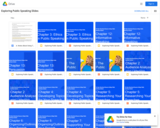
These are PowerPoint slides for the Exploring public speaking textbook for instructors/students to use.
- Subject:
- Business and Communication
- Communication
- Material Type:
- Lecture Notes
- Reading
- Textbook
- Author:
- Barbara Tucker
- Date Added:
- 07/02/2021

These are PowerPoint slides for the Exploring public speaking textbook for instructors/students to use.

This book introduces students to some of the most unusual places in our galaxy outside of our solar system. Answering the question, "How many stars are in the sky?" introduces students to basic counting, tallying, and grouping techniques, as well as allowing for the use of simple proportions.

This lesson will teach you the difference between different investments, what they are and the risk involved with each.

This lesson includes lectures discussing raising animals like llama, bison, alpaca, ratites, and an activity researching and planning a profitable business in the exotic breeds industry. Resource originally from New Mexico Animal, Plant, and Soil Science Lesson Plan Library.

As science extension activities, this book of problems introduces students to mapping the shape of the Milky Way galaxy, and how to identify the various kinds of galaxies in our universe. Students also learn about the shapes and sizes of other galaxies in our universe as they learn how to classify them. The math problems cover basic scientific notation skills and how they apply to working with astronomically large numbers. It also provides exercises in plotting points on a Cartesian plane to map the various features of our Milky Way.

Welcome to this Edu-Metaverse and Smart Education Curriculum! This curriculum was developed by ChatGPT, a large language model trained by OpenAI, through questions and interactions with a learner.ChatGPT. (2023, March 29)

This lesson explores the swine industry: locating major physical characteristics, describing common breeds, selection of superior animals, and contrasting production systems and marketing methods of swine and hogs. Adapted from New Mexico Animal, Plant, and Science Lesson Plan Library.

Exponential Growth/Decay

The Exponents and Radicals module is separated into two parts -- exponents and radicals. Each part has two subtopics. Each subtopic has a video lecture page and a practice assignment. The video lecture page includes guided notes in pdf form and videos that follow the guided notes. There are also Word document versions of the notes in the "files" section of this course for instructor convenience. Each video lecture page also includes supplemental YouTube videos which are optional for students and may be used if further instruction is needed. The practice assignment is a set of exercises in Derivita that correspond to the skills covered in the video lecture.There are also two review assignments in this module -- one for exponents and one for radicals. These assignments cover everything from that part of the module, rather than being broken up into parts like the practice assignments. So there are a total of six assignments in the module and instructors can choose which assignments are most appropriate for their students' needs.This work, by Madilyn Marshall, is licensed under a Creative Commons Attribution 4.0 International License.CC-BY

Lecture notes on use of extreme value theory in financial risk management
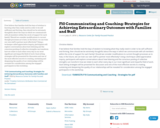
If we believe that families hold the keys of wisdom to knowing what they really need in order to be self sufficient and thriving, then should we be extremely thoughtful about the ways in which we communicate with all members within the circle of support for each family? Should we consider modifications to current thought processes as to how, in the future, we can train our own staff to partner most effectively? Using a technique called appreciative inquiry, participants will explore conversations about how listening and the conscious pooling of collective strengths can transform how we relate to each other every day in our most significant and impactful field of work. Goal setting strategies will be presented for discussion and one of the most effective secrets to creating, sustaining and deepening the quality of our relationships will be revealed for consideration among the engaged participants in this workshop.
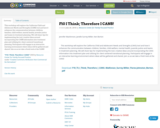
This workshop will explore the California Child and Adolescent Needs and Strengths (CANS) tool and how it enhances the communication between children; families; child welfare; mental health; juvenile justice and teams in treatment planning. We will share tips for implementing the tool; creative ideas around incorporating the CANS information into treatment plan and utilizing for client centered transitional planning. Participants will engage in an interactive learning environment where ideas will be gathered and shared. Join us as we take a fresh look at the CANS!

Parent or family partners have gained respect as agency efforts to ensure the family voice and choice is present. They can link family culture to services, shift the perception many families have about involvement in services and bridge the divide from worker to client. Unfortunately, those same factors that make them appealing as a family change agent or agency informant on policy and practice can make it difficult to hire staff. This workshop will be presented by parent partner champions who have found the way to hire and support staff. Come hear how it can be done and get inspired to be a champion in your agency.
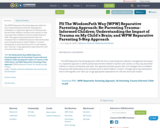
The WPW Reparative Parenting Approach shifts the focus of parenting from behavior management techniques to a reparative approach in which parents become their children’s teachers and coaches; so they may assist their children to mature and develop new skills. This approach provides parents with core strategies that re-establish the parent-child relationship as the essential arena in which children “re-learn;” through day-to-day interactions; how to self-regulate; and “catch up” to age appropriate expectations for self-care and social conduct.
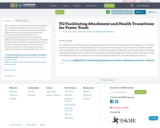
This workshop is intended to enhance understanding of the attachment disruptions that commonly occur in foster children who experience multiple placements. Discussion will help caregivers and professional providers identify common behaviors and accompanying needs of youth with attachment difficulties, and identify ways of facilitating relationship development for children who have difficulty forming healthy attachments. Lastly, we will discuss how to facilitate transitions for foster youth in a way that supports attachment and relationship permanence.
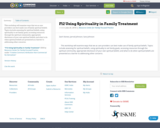
This workshop will examine ways that we as care providers can best make use of family spiritual beliefs. Topics include assessing for spiritual beliefs; using spirituality to set family goals; accessing resources through the spiritual community; appropriate disclosure of your own spiritual beliefs; and what to do when spiritual beliefs are presented as a barrier to addressing other concerns.
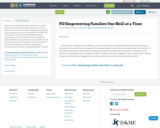
Family stress in Wraparound treatment is an unmet need and not addressed within the practice’s format. Moreover; staff need the skills to augment the program goals of permanency and safety within the family. This presentation will discuss the PRAXES parenting empowerment model; which has been successfully used in California; along with its new companion model for children and youth. Together; these models help to reduce stress; improve treatment engagement; increase positive behavior and develop family cohesion.
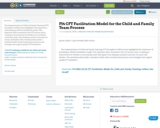
The implementation of Child and Family Teaming (CFT) throughout California has highlighted the importance of providing an effective facilitation model. This important skill is essential in the CFT process and in creating an environment for families to successfully reach their goals; thus leading to positive outcomes for youth and families. This workshop will provide a standard model; which includes best practices and strategies that support quality CFT facilitation.
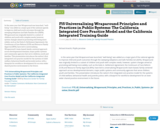
In the same year that Wraparound was launched; “well-being” was added as a major goal of the national agenda to improve child and youth outcomes through the sweeping Adoptions and Safe Families Act (ASFA). Wraparound was originally limited to a subset of children and youth with complex needs; however; system changes aimed at promoting well-being more widely; such as the Katie A. Settlement Agreement; the Continuum of Care Reform (CCR) and Resource Family Approval (RFA); have led to universalizing Wraparound’s team-based; family-centered approach across developmental domains; major public systems and community agencies that serve children; youth and families. This presentation introduces the nation’s first integrated core practice model for the systems of child welfare; behavioral health and juvenile justice; with a blueprint for workforce development for an even wider shared practice environment in the future.
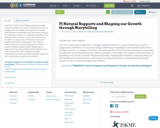
Fred Finch Youth Center Wraparound is once again taking the forefront in creative, outside the box ways to engage youth and families in the process of change, while likewise integrating fun and interaction back into the training process for our colleagues in the field. This workshop offers a chance to share how Wraparound providers can help youth and family develop a new, healthier perception of themselves. This creative method uses facets of storytelling in the context of essential Wraparound principles. Employing the framework of meaning making and the importance of uncovering context, this training encourages development in creative methods of finding supports as well as practicing strength based reframes.